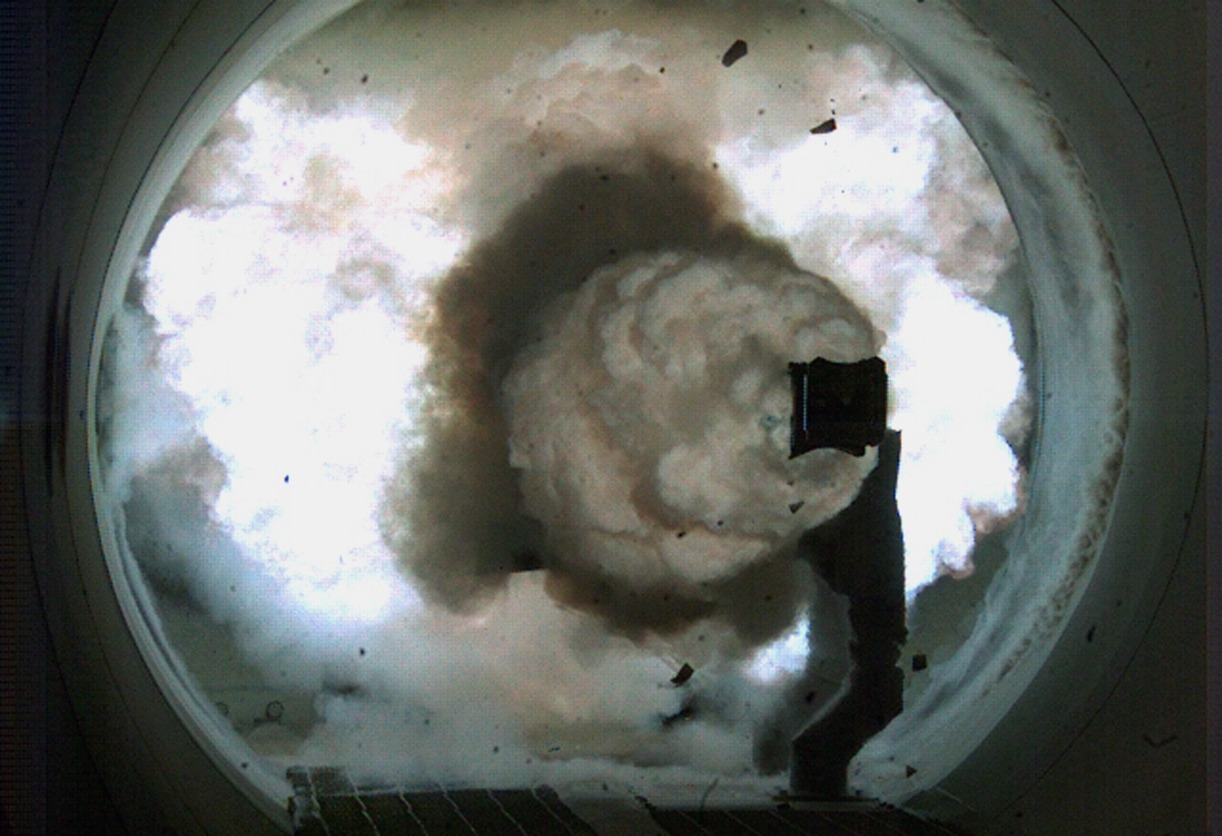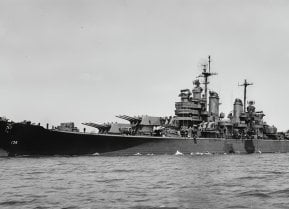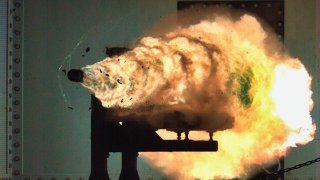Railguns: The Game Changer Weapon the U.S. Military Never Built
Long before video games of the 1990s and early 2000s popularized the concept of a "railgun," military planners first conceived of such a weapon. Its technology is fairly simple, but it could still take years before it goes from science fiction to reality.
Whatever Happened to Railguns? - Long before video games of the 1990s and early 2000s popularized the concept of a "railgun," military planners first conceived of such a weapon. Its technology is fairly simple, but it could still take years before it goes from science fiction to reality.
Among the earliest efforts occurred during the First World War, when French designer Andre Louis Octave Fauchon-Villeplee proposed an electric cannon could fire a projectile further than the explosive ordnance of the era. His concept caught the attention of the French military, which was seeking a weapon that could rival such long-range cannons as Germany's so-called "Paris Gun." Under the direction of the Director of Inventions at the French Ministry of Armaments in 1918, Fauchon-Villeplee was charged with developing a thirty to fifty millimeter electricannon based on his simple design.
The First World War ended before Fauchon-Villeplee's design could be perfected – and more than a century later, the development of the weapons has continued with only limited success.
China and Japan are reported to be developing such weapons, while the United States military has largely put the efforts on the back burner. Tokyo has been engaged in developing a railgun since 2015, with the aim of being able to stop incoming missiles – including potential hypersonic missiles – that are fired at the island nation. The goal of the program has been to mount such a weapon on a warship. A 2016 demonstration of a railgun had a projectile reach a speed of approximately 4,470 mph, or 5.8 times the speed of sound.
While it sounds like that test was a success, the truth is that Tokyo is likely no closer to perfecting the weapon than the United States.
Railguns: A Host of Problems
As previously reported, at issue is the energy required for the weapon to operate as advertised.
There certainly exists the basic technology – which includes that large (very large) power source, a pair of parallel rails, and a moving armature. The concept itself is rather simple, which explains how Fauchon-Villeplee was able to conceive of such a weapon before the development of jet aircraft and missiles.
Yet, since it was first envisioned, the basic problem has been one of obtaining enough power to actually launch a projectile in a controlled and reliable manner. A railgun could require millions of amps to create a magnetic field required to launch the projectile. It was certainly beyond anything the French military could have produced during the First World War.
Even today, it remains a serious hurdle to overcome. A nuclear reactor could provide the power, but that's just part of the problem with the concept of a railgun.
The actual rail needs to be of a conductive metal such as copper and would need to be four to thirty feet long or longer, which is why railguns could be well-suited to a warship – and why despite what video games may suggest, won't be rifle-sized anytime soon.
Then there is the issue of resistive heat, which can damage the surface of the rails. Heat has been a problem with machine guns since their invention and an early solution was to water cool the barrel, while later the best option was to swap out the barrel and maintain fire discipline. Cooling options for the rails are being explored, but a weapon that can't be repeatedly fired without damaging the system isn't something any military is likely to adopt.
Over the past decade, the United States Navy invested upwards of $500 million into its electromagnetic railgun (EMRG) program. The goal of that project was to develop a weapon that could be capable of firing projectiles at hypersonic speeds of 4,500mph or more. Because of the high speed, mass, and kinetic energy, the projectile wouldn't even need to contain explosives to inflict damage.
However, after years of troubled development, the much-hyped supergun has made only limited progress and is now largely stuck in the research and development stage. It wasn't been for lack of effort or money.

China and Japan are now pressing forward, but whether they have any more luck in perfecting the system has yet to be seen. In the meantime, we'll have to just load up with the railguns in the next first-person shooter.
Author Experience and Expertise: Peter Suciu
Peter Suciu is a Michigan-based writer. He has contributed to more than four dozen magazines, newspapers, and websites with over 3,200 published pieces over a twenty-year career in journalism. He regularly writes about military hardware, firearms history, cybersecurity, politics, and international affairs. Peter is also a Contributing Writer for Forbes and Clearance Jobs. You can follow him on Twitter: @PeterSuciu. You can email the author: [email protected].
Image Credit: Creative Commons.


